
Charming Napier Town: The Heartbeat of Jabalpur
Discover Napier Town in Jabalpur: A harmonious blend of history, culture, and modern charm, perfect for a memorable tourist experience.
Nestled in the vibrant city of Jabalpur, Napier Town is a delightful blend of history, culture, and modernity. This charming neighbourhood is known for its colonial-era architecture, serene parks, and bustling markets. A stroll through Napier Town offers a glimpse into the rich heritage of the British Raj, with beautifully preserved buildings that tell tales of a bygone era. Visitors can immerse themselves in the local culture by exploring the numerous temples, churches, and mosques scattered throughout the area. The iconic Hanuman Tal, a large lake surrounded by lush greenery, is a perfect spot for a relaxing afternoon. The neighbourhood's central location makes it an ideal base for exploring the wider attractions of Jabalpur, including the famous Marble Rocks and Dhuandhar Falls. Food enthusiasts will be delighted by the variety of culinary delights available in Napier Town. From traditional Indian street food to upscale restaurants offering international cuisine, there's something to satisfy every palate. The local markets are a treasure trove of handicrafts, textiles, and souvenirs, providing a perfect opportunity to bring a piece of Jabalpur back home.
Local tips in Napier Town
- Visit Hanuman Tal in the early morning or late afternoon for the best views and serene atmosphere.
- Don't miss the local markets for unique handicrafts and textiles.
- Try the street food around the main market area for an authentic taste of local cuisine.
- Wear comfortable walking shoes as the best way to explore Napier Town is on foot.
Charming Napier Town: The Heartbeat of Jabalpur
Nestled in the vibrant city of Jabalpur, Napier Town is a delightful blend of history, culture, and modernity. This charming neighbourhood is known for its colonial-era architecture, serene parks, and bustling markets. A stroll through Napier Town offers a glimpse into the rich heritage of the British Raj, with beautifully preserved buildings that tell tales of a bygone era. Visitors can immerse themselves in the local culture by exploring the numerous temples, churches, and mosques scattered throughout the area. The iconic Hanuman Tal, a large lake surrounded by lush greenery, is a perfect spot for a relaxing afternoon. The neighbourhood's central location makes it an ideal base for exploring the wider attractions of Jabalpur, including the famous Marble Rocks and Dhuandhar Falls. Food enthusiasts will be delighted by the variety of culinary delights available in Napier Town. From traditional Indian street food to upscale restaurants offering international cuisine, there's something to satisfy every palate. The local markets are a treasure trove of handicrafts, textiles, and souvenirs, providing a perfect opportunity to bring a piece of Jabalpur back home.
Iconic landmarks you can’t miss
Bhawartal Garden
Discover the serene beauty of Bhawartal Garden in Jabalpur, a lush urban retreat perfect for relaxation, picnics, and family outings.

Ghanta ghar
Explore Ghanta Ghar in Jabalpur, a historical landmark that offers a glimpse into a vibrant cultural heritage and bustling local life.
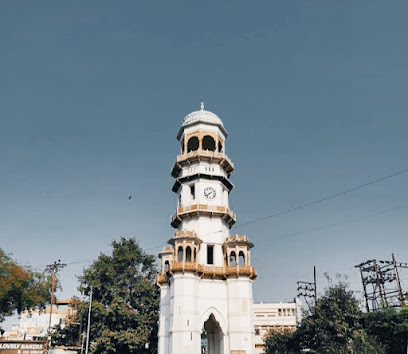
Balancing Rock
Discover the stunning Balancing Rock in Jabalpur, a natural wonder where geology meets breathtaking views and local culture thrives.

Rani Durgavati Fort & Museum
Discover the captivating history of Rani Durgavati Fort & Museum in Jabalpur, a cultural gem showcasing the legacy of a legendary queen.
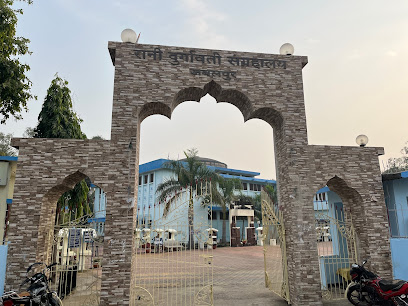
Rani Durgawati Fort
Explore the majestic Rani Durgawati Fort in Jabalpur, a historical fortress that offers breathtaking views and a rich cultural experience.

Prem Mandir Jabalpur
Discover the serene beauty and intricate artistry of Prem Mandir in Jabalpur, a must-visit Hindu temple and cultural landmark in India.

Statue of Rani Durgavati
Discover the inspiring Statue of Rani Durgavati in Jabalpur, a majestic tribute to a legendary queen and a must-visit historic site.
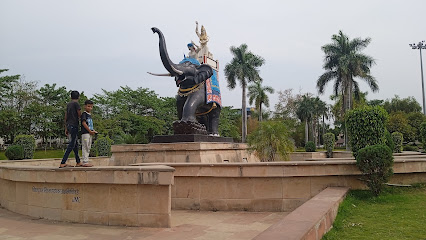
Aaykar Chauraha
Experience the vibrant energy of Aaykar Chauraha, a bustling junction in Jabalpur offering a gateway to explore the local culture and attractions.
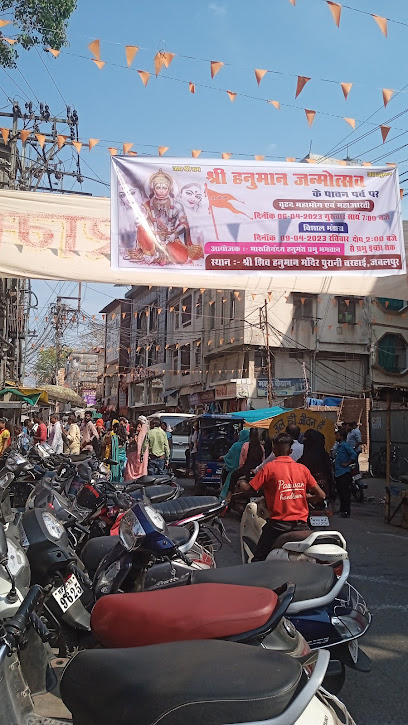
Napier Town
Experience the vibrant culture and rich heritage of Napier Town, a hidden gem in Jabalpur, Madhya Pradesh, perfect for your travel adventures.

Maharishi Dayanand Saraswati Chowk
Discover the essence of Jabalpur at Maharishi Dayanand Saraswati Chowk—a vibrant square filled with culture, community, and local charm.

Unmissable attractions to see
Tagore Garden
Explore the lush landscapes and serene ambiance of Tagore Garden, an enchanting oasis in Jabalpur, Madhya Pradesh.
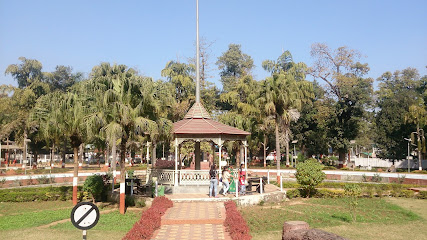
Bhawartal Garden
Discover the tranquility of Bhawartal Garden, a lush urban oasis in Jabalpur perfect for relaxation, picnicking, and capturing nature's beauty.

Ghanta ghar
Discover the rich heritage and vibrant atmosphere at Ghanta Ghar, a captivating clock tower in Jabalpur, Madhya Pradesh.

Balancing Rock
Explore Jabalpur's Balancing Rock, a stunning natural attraction showcasing a gravity-defying geological wonder amidst lush landscapes.

Rani Durgawati Fort
Discover the historical splendor of Rani Durgawati Fort, a majestic fortress in Jabalpur that narrates the tales of bravery and architectural magnificence.

Shaheed Smarak
Explore the Shaheed Smarak in Jabalpur – a poignant memorial that honors India's heroes amidst serene gardens and rich history.

जलपरी तालाब
Experience the tranquility of Jalpari Talab in Jabalpur, a serene lakeside retreat surrounded by lush nature and vibrant wildlife.

Aaykar Chauraha
Discover the vibrant life at Aaykar Chauraha, a bustling hub in Jabalpur filled with local shops, eateries, and cultural experiences.

Essential places to dine
Navnita Restaurant
Savor delectable vegetarian dishes at Navnita Restaurant in Jabalpur—where Indian spices meet Chinese flavors.

Best Choice
Experience the best fast food in Jabalpur at Best Choice, where delicious hamburgers meet vibrant local culture.

Zamghat
Discover Zamghat: A must-visit restaurant in Jabalpur offering delicious vegetarian dishes and aromatic coffee amidst a cozy ambiance.
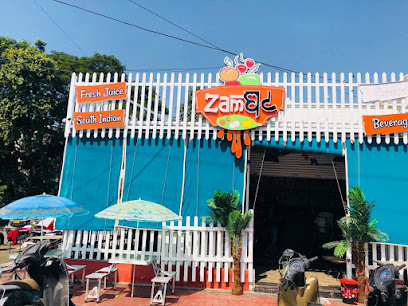
70 mm Dining
Discover the essence of Indian flavors at 70 mm Dining in Jabalpur – where tradition meets modern dining in a cozy atmosphere.

Saheb's Food Junction
Experience authentic Indian flavors at Saheb's Food Junction in Jabalpur – where culinary tradition meets modern fast food.
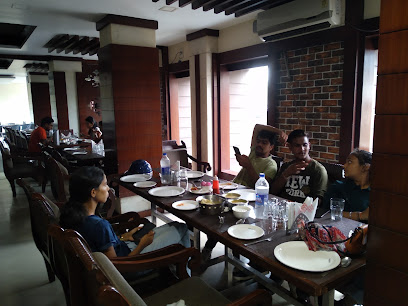
Dal chini Restaurant
Experience the flavors of Jabalpur at Dal Chini Restaurant – where delicious fast food meets local culinary delights.

Lazeez Lawn & Restaurant
Experience the best of Jabalpur's culinary scene at Lazeez Lawn & Restaurant with mouth-watering biryani and fast food delights.

Punjab Restaurant
Experience the authentic flavors of North India at Punjab Restaurant in Jabalpur, where every dish tells a delicious story.

Roopali Inn Restaurant - Best Indian | Vegetarian Restaurants in Jabalpur
Experience authentic vegetarian Indian cuisine at Roopali Inn Restaurant in Jabalpur – where every meal tells a story.

Olives Restaurant (A Unit of Hotel Rahul)
Experience the best of Indian and international cuisine at Olives Restaurant in Jabalpur's Old Napier Town - a true culinary haven.

Markets, malls and hidden boutiques
Firstcry.com Store Jabalpur Wright Town Circle
Discover a treasure trove of baby and children's products at Firstcry.com Store in Jabalpur, your go-to destination for quality and variety.

The Raymond Shop
Explore The Raymond Shop in Jabalpur for premium men's fashion, from casual wear to exquisite tuxedos, ensuring style for every occasion.

Prestige Xclusive - Napier Town, Jabalpur
Discover Jabalpur's finest kitchen supply store, where quality meets innovation in kitchenware and appliances.

THE IVY
Explore the vibrant fashion scene at The Ivy, a premier clothing and accessories store in Jabalpur's bustling Napier Town.

BROWN & BLACK (The Leather Store)
Explore the finest leather goods at BROWN & BLACK, Jabalpur's premier destination for style and craftsmanship.
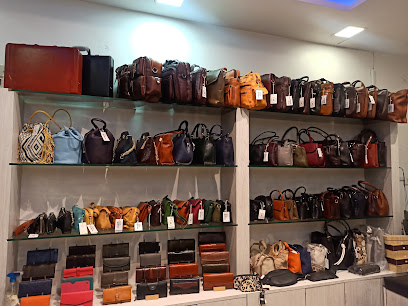
Aarchi Gift
Discover Aarchi Gift in Jabalpur: Your go-to destination for unique, handcrafted souvenirs that celebrate India's rich culture.

Wonderland, Toys & Gifts
Explore Wonderland, a magical toy store in Jabalpur, offering toys, gifts, and baby products for all ages, ensuring smiles and laughter for everyone.
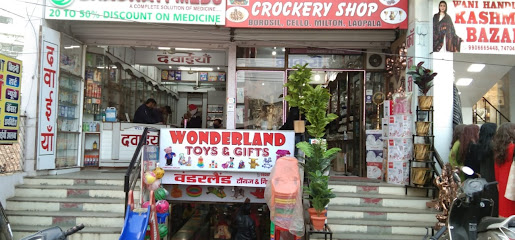
Zolo Boutique
Explore Zolo Boutique in Jabalpur for a unique blend of modern fashion and local culture, featuring stylish clothing and accessories.

Fashion Factory
Explore the latest fashion trends and stylish accessories at Fashion Factory in Jabalpur, your ultimate shopping destination.

Pantaloons (Napier Town, Jabalpur)
Explore Pantaloons in Jabalpur for stylish clothing options that cater to men, women, and children, all under one roof.

ALL MART JABALPUR
Explore All Mart Jabalpur for a diverse shopping experience, featuring authentic Indian groceries, gourmet treats, and beauty products in the heart of Madhya Pradesh.

Vijeta Boutique
Discover unique fashion at Vijeta Boutique in Jabalpur, where contemporary style meets traditional craftsmanship, perfect for memorable souvenirs.

Essential bars & hidden hideouts
One Mile
Discover the rich flavors of Jabalpur at One Mile, a premier grill restaurant serving exquisite grilled dishes in a lively atmosphere.

Vini's Bar
Experience the vibrant nightlife at Vini's Bar, where delicious drinks and great food meet in Jabalpur's lively Naya Mohalla.
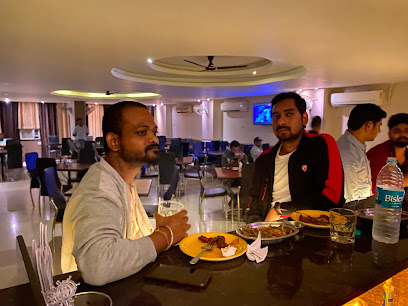
Hotel Avtar Bar & Restaurant
Enjoy delightful dining and vibrant nightlife at Hotel Avtar Bar & Restaurant in the heart of Jabalpur, Madhya Pradesh.

Clava
Experience the lively spirit of Clava Pub in Jabalpur, where good times and great drinks await in a vibrant atmosphere.

Dx cafe & lounge - Best Party Hall | Couple Sitting Cafe | Couple Cabins in Jabalpur
Experience the perfect blend of culinary delights and vibrant ambiance at Dx Cafe & Lounge in Jabalpur, ideal for couples and celebrations.

tanhai bar and restaurant
Discover Tanhai Bar and Restaurant in Jabalpur, where vibrant ambiance meets a diverse menu of local and international delights.

ATHARVA BAR & RESTUARENT
Discover the lively atmosphere of Atharva Bar & Restaurant in Jabalpur, where delicious food and refreshing drinks create unforgettable memories.

OPIUM- Cocktails and Bistro
Discover the vibrant nightlife of Jabalpur at OPIUM, where exquisite cocktails and delightful bistro fare create unforgettable moments.
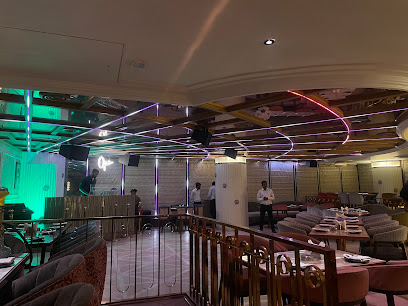
Shainky Bar & English Bar
Experience the vibrant nightlife of Jabalpur at Shainky Bar & English Bar, where local culture meets a lively atmosphere and a diverse drink selection.

Engliah Sharab
Discover the vibrant nightlife at Engliah Sharab, Jabalpur's premier bar for cocktails, local brews, and a lively atmosphere.

Local Phrases
-
- Helloनमस्ते
[Namaste] - Goodbyeअलविदा
[Alvida] - Yesहाँ
[Haan] - Noनहीं
[Nahi] - Please/You're welcomeकृपया
[Kripya] - Thank youधन्यवाद
[Dhanyavaad] - Excuse me/Sorryक्षमा करें
[Kshama karein] - How are you?आप कैसे हैं?
[Aap kaise hain?] - Fine. And you?ठीक हूं। आप?
[Theek hoon. Aap?] - Do you speak English?क्या आप अंग्रेजी बोलते हैं?
[Kya aap angreji bolte hain?] - I don't understandमुझे समझ नहीं आया
[Mujhe samajh nahi aaya]
- Helloनमस्ते
-
- I'd like to see the menu, pleaseकृपया मेनू दिखाना
[Kripya menu dikhana] - I don't eat meatमैं मांस नहीं खाता
[Main maans nahi khata] - Cheers!चियर्स!
[Cheers!] - I would like to pay, pleaseकृपया पेमेंट करना है
[Kripya payment karna hai]
- I'd like to see the menu, pleaseकृपया मेनू दिखाना
-
- Help!बचाओ!
[Bachao!] - Go away!चले जाओ!
[Chale jao!] - Call the Police!पुलिस को बुलाओ!
[Police ko bulao!] - Call a doctor!डॉक्टर को बुलाओ!
[Doctor ko bulao!] - I'm lostमैं खो गया हूँ
[Main kho gaya hoon] - I'm illमुझे बीमारी है
[Mujhe bimari hai]
- Help!बचाओ!
-
- I'd like to buy...मैं खरीदना चाहता हूँ...
[Main khareedna chahta hoon...] - I'm just lookingमैं बस देख रहा हूँ
[Main bas dekh raha hoon] - How much is it?यह कितने का है?
[Yeh kitne ka hai?] - That's too expensiveयह बहुत महंगा है
[Yeh bahut mehnga hai] - Can you lower the price?क्या आप कीमत कम कर सकते हैं?
[Kya aap kimat kam kar sakte hain?]
- I'd like to buy...मैं खरीदना चाहता हूँ...
-
- What time is it?अब कितने बजे हैं?
[Ab kitne baje hain?] - It's one o'clockएक बजे हैं
[Ek baje hain] - Half past (10)दस बजे के बाद आधे घंटे
[Das baje ke baad aadhe ghante] - Morningसुबह
[Subah] - Afternoonदोपहर
[Dopahar] - Eveningशाम
[Shaam] - Yesterdayकल
[Kal] - Todayआज
[Aaj] - Tomorrowकल
[Kal] - 1एक
[Ek] - 2दो
[Do] - 3तीन
[Teen] - 4चार
[Char] - 5पाँच
[Paanch] - 6छह
[Chhe] - 7सात
[Saath] - 8आठ
[Aath] - 9नौ
[Nau] - 10दस
[Das]
- What time is it?अब कितने बजे हैं?
-
- Where's a/the...?कहाँ है...?
[Kahan hai...?] - What's the address?पता क्या है?
[Pata kya hai?] - Can you show me (on the map)?क्या आप मुझे दिखा सकते हैं (नक्शे पर)?
[Kya aap mujhe dikhha sakte hain (naksha par)?] - When's the next (bus)?अगली (बस) कब है?
[Agli (bus) kab hai?] - A ticket (to ....)एक टिकट (.... के लिए)
[Ek ticket (... ke liye)]
- Where's a/the...?कहाँ है...?
History of Napier Town
-
Napier Town, established during the British colonial era, was named after Sir Charles Napier, a prominent military figure in British India. The neighbourhood reflects the architectural style of the period, characterized by wide roads and colonial bungalows, which were built to accommodate British officials and their families. This planned urban area was integral to Jabalpur's development as a strategic military and administrative hub.
-
The architecture of Napier Town showcases a blend of colonial and indigenous styles. Notable structures include the Napier Town Church, built in the 19th century, which serves as a testament to the Christian missionary influence in the region. The area's design, featuring spacious gardens and tree-lined avenues, was influenced by the British desire for a comfortable living environment, making it one of the most sought-after neighbourhoods in Jabalpur.
-
Over the years, Napier Town has evolved into a vibrant cultural melting pot, reflecting the diverse communities that inhabit it. The neighbourhood hosts various cultural events and festivals, showcasing the rich heritage of Jabalpur, including traditional music, dance, and cuisine. Local markets and eateries serve as hubs for social interaction, further enhancing the community spirit.
-
After India gained independence in 1947, Napier Town continued to grow and modernize while retaining its historical charm. The influx of people from different parts of India contributed to the cultural diversity of the neighbourhood. Government initiatives in urban development have also transformed the area, making it a blend of modern amenities and historical significance.
-
Napier Town is home to several educational institutions and cultural organizations that play a significant role in shaping the local community. The presence of schools, colleges, and libraries has made education a priority in the neighbourhood, contributing to the intellectual growth of its residents. This focus on education is indicative of the broader historical context of Jabalpur as a center for learning and development in central India.
Napier Town Essentials
-
Napier Town is easily accessible from various neighbourhoods in Jabalpur. If you are arriving from the railway station, you can take a local auto-rickshaw or taxi, which will take approximately 15-20 minutes depending on traffic. Buses also operate frequently from the main bus terminal to Napier Town. If you are coming from the airport, the best option is to hire a taxi, which should take about 30-40 minutes.
-
Napier Town is best explored on foot due to its compact size. However, for longer distances, auto-rickshaws and cycle rickshaws are widely available and affordable. Local buses connect Napier Town with other parts of Jabalpur, but schedules may vary. Bicycle rentals can also be a fun way to explore the area, with some local shops offering rentals.
-
Napier Town is generally safe for tourists, but it's essential to stay vigilant. Avoid walking alone late at night in poorly lit areas. While violent crime is rare, petty theft can occur, especially in crowded places. Areas to be cautious around include the bus terminal and some alleyways. Always keep your belongings secure and avoid displaying valuables.
-
In case of emergencies, dial 100 for police assistance or 101 for fire services. For medical emergencies, local hospitals such as the Madhya Pradesh Medical College and Jabalpur Hospital are available. It’s advisable to carry a list of emergency contacts and have travel insurance that covers medical expenses. Pharmacies are also accessible for minor health issues.
-
Fashion: Do dress modestly, especially in religious places. Avoid shorts and sleeveless tops. Religion: Do respect local customs; remove shoes when entering temples. Public Transport: Do give up your seat for elderly individuals; don’t eat or drink on public transport. Greetings: Do greet with a 'Namaste' and a slight bow; don’t engage in overly casual gestures. Eating & Drinking: Do try local cuisine; don’t drink tap water—opt for bottled water instead.
-
To experience Napier Town like a local, visit the bustling markets where you can sample street food and shop for handicrafts. Engage in conversations with shopkeepers, who often have fascinating stories about the area. Look for local festivals or events, as these can provide a glimpse into the rich cultural heritage of the town. Don't miss the local parks, which are perfect for relaxation and people-watching.
-
When visiting local homes or attending family gatherings, it is customary to bring a small gift, such as sweets or fruit. Always use your right hand for giving and receiving items, as the left hand is considered unclean. It is also polite to inquire about a person’s family when meeting them, as family is an essential aspect of Indian culture.









